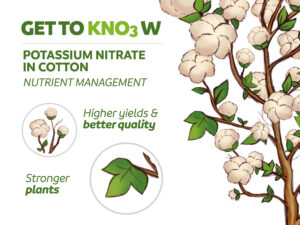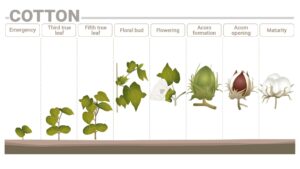In India a field experiment was conducted with upland cotton (Gossypium hirsutum L.) at Ludhiana for 4 years to study the effect of foliar nutrition as a supplement to soil-applied nutrients on cotton.
The study was performed on a course loamy, non-calcareous soil, low in organic carbon and medium in available P and K. Treatments consisted of the control (soil-applied fertilizer) and 4 supplemental sprays each of 2% potassium nitrate, 2% urea and 2% potassium chloride at weekly intervals, starting from flower initiation.
Average data of 4 years showed that seed-cotton yield increased with 36,3% for potassium nitrate, 27,2% for urea and 22,4% for potassium chloride compared to the untreated control (Table 1). Also the number of flowers and bolls/plant increased the most for potassium nitrate. With respect to net return potassium nitrate was most profitable and outperformed urea and potassium chloride (Figure 1).
Table 1. The effect of foliar sprays compared to the untreated control.
 Figure 1. The effect of foliar applications on the net return (Rs/ha) for cotton.
Figure 1. The effect of foliar applications on the net return (Rs/ha) for cotton.



